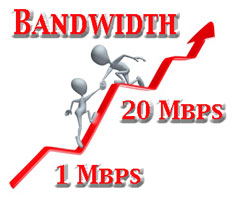For almost a century and a half, twisted pair copper wiring has been the way telecom services were delivered. This ranges from classic plain old telephone service, to T1 digital lines for Internet access and point to point private connections. Copper, however, is on the way out. If you haven’t run up against its bandwidth limitations yet, you may still have a problem if your local telephone company (who owns all the copper lines) decides to discontinue service. Then what?
 What Replaces Copper Lines?
What Replaces Copper Lines?When it comes to bandwidth, fiber optic cables can’t be beat. You can order any bandwidth from 10 Mbps up to 10 Gbps, and even 100 Gbps in many locations. Hybrid Fiber Cable, commonly known as cable broadband, can now deliver multi-gigabit speeds through the classic coaxial cable.
Sounds great, but what if you are in an area that is not served by Cable and has no fiber infrastructure nearby? Are you simply stuck with no service at all?
5G Wireless To the Rescue
Fifth generation or 5G smartphones have pretty much taken over the market from the 4G LTE standard that served us for years. With 5G comes new bands that offer expanded bandwidth and low latency for smart autonomous devices that are called the Internet of Things.
There is another application that 5G is pursuing aggressively. That is fixed wireless access or FWA. The “fixed” part of FWA means situations that are not mobile. Think of your desktop PC, point of sale terminals, or even your entire Local Area Network.
Internet service providers called WISPs or Wireless Internet Service Providers have been around to serve homes and businesses that can’t get wired or fiber Internet. They tend to be very local and independent and use systems that are not affiliated with cellular providers. If you have a WISP nearby, they can often step in and give you the service you need to stay online.
How 5G is different than the usual WISP is that it is true cellular broadband and serves both fixed and mobile users. The same broadband that you use on your phone can also be delivered directly to an office, store or residence wherever there is a cell tower nearby.
4G LTE service actually started the push for applications to use cellular broadband rather than depend on DSL, cable or other wired services. When 4G LTE became widely available it offered bandwidths that rivaled typical broadband services and had enough capacity to serve multitudes of customers rather than just a few at a time.
4G LTE is still a good option for many applications. What 5G does is offer bandwidths that can rival fiber at low latencies for sensitive applications. Major cellular carriers are promoting 5G wireless as a competitor to cable broadband in fixed locations. For business users, 5G can often substitute for unavailable T1 lines or even DS3 bandwidth.
How Do You Get 5G FWA?
You may have already paired your phone with your desktop PC or tablet using Bluetooth and setting up the phone as a personal Internet Hotspot. FWA expands upon this idea. Instead of a phone, you install a 5G or combination 5G / 4G LTE Gateway. This can be a simple box that sits on your desk in on a shelf near a window. It may have a wired Ethernet port to connect to your router or may even contain a router and WiFI hotspot. Some of these devices have special antennas that are more efficient in capturing the cellular tower signal for reliable operation.
A good way to research the availability of 5G and 4G LTE options for your business is to work with a bandwidth broker that represents a multitude of companies offering this type of service. You’ll want a solid connection with enough bandwidth to serve the size of your business and sufficient or no data limits. You may be surprised at the variety of offerings available, even in rural or otherwise underserved areas.


